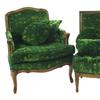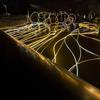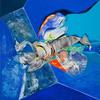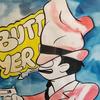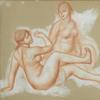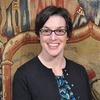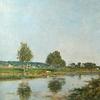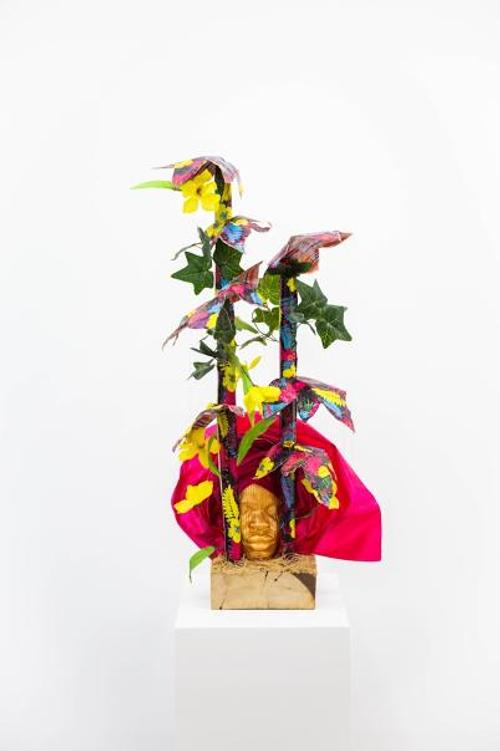
You Don't See Me
http://artistsallianceinc.org/cuchifritos-gallery-2/upcoming-exhibitions/you-dont-see-me
Layo Bright, Adrienne Gaither, Mylo Mu, and Na’ye Perez
Curated by Tariku Shiferaw
Opening: Friday, March 13 from 6-8p
On View: March 13 through March 29, 2020
Gallery Hours: Tuesday through Sunday; 12p to 6p
Location: 88 Essex Street NY, NY 10002 (inside Essex Street Market)
Cuchifritos Gallery + Project Space is pleased to present You Don’t See Me, an exhibition that critically engages ‘material as a suppressed history.’ Curated by Tariku Shiferaw, who is a current artist-in-residence of the LES Studio Program, through which this exhibition is made possible.
Featured in this exhibition are artists Layo Bright, Adrienne Gaither, Mylo Mu, and Na’ye Perez, whose works are organized around the concept of appropriated materials, encouraging observers to take a critical eye to the usage of these materials throughout history. Using paint, found objects, collage, video, and performance, these four artists draw from history to both legitimize their practices through recognizable materials and create a space for conversations that otherwise would not have been entertained by the privileged societal majority.
For Layo Bright, her narrative focuses on the use of materials and artifacts that have historical significance in Nigeria and throughout West Africa. She uses “Ghana-must-go-bags,” a synthetic material made of thermoplastic, in constructing her “Ife-head” sculptures. These bags were heavily and desperately used in 1983 when all Ghanaians residing in Nigeria were given a 24-hour notice, by the government, to move out of the country they had lived in for over a decade. Upwards of a million people had to uproot their lives, taking only what they could carry in, what became known as, “Ghana-must-go-bags.” Many Ghanaians suffered due to border politics of the time. In using these bags as material, Bright addresses xenophobic policies within the African continent and throughout Europe and North America.
Additionally, she criticizes the shortcomings of the western mindset towards the historical accomplishments of Black people, which she demonstrates through her appropriation of the “Ife-head” artifacts. Despite the fact that these 13thor 14thcentury artifacts were first found in Ife, an ancient Yoruba city in Nigeria, British archeologists immediately assumed that the artifacts were made by ancient Greeks. This is one of many examples of how Black people are not rightfully acknowledged in the modern world.
Adrienne Gaither uses historically charged art-medium and genre in emphasizing conversations about post-race politics in the United States. Using abstract paintings, Gaither criticizes the privilege of those who can afford the ability to claim color-blindness. In her series, “I Don’t See Color,” she deconstructs the weight of this commonly-used statement by comparing it to those who are actually clinically color-blind. In making such comparison, she draws attention to the ill-considered good intention of the majority, revealing that the true lack of sight is towards the needs of Black bodies in Western society.
The title for this exhibition is inspired by Gaither’s work, which brings up the important issues of visibility and representation in the United States. The erasure of those with darker-complexions is played out in painting courses across art schools in the country, in which a pale-peach or rose pigment is often referred to as a flesh-tone color, disregarding all other skin colors. This issue is further demonstrated through the history of color photography and video, where the camera lens is subjectively designed to recognize the light-skin tone as the standard. It was not until 1995 that a major company such as Kodak adopted the technological ability to capture multi-racial skin tones. Even then, the effort was fueled by the complaints of furniture and chocolate companies who were having difficulty capturing quality color photography of their products. In his essay, “Pictures and Progress,” Fredrick Douglass expresses how the ideals of representational justice and photography are closely related. In an earlier essay, “Lecture on Pictures,” Douglass wrote, “the picture making faculty is a mighty power because it allows anyone to make their subjective nature objective.”
In line with Douglass’ theory on representation of the Black body, Na’ye Perez’s figurative landscape paintings counteract these racial biases by only representing groups of people with whom he identifies. Heavily influenced by Hip-Hop throughout his upbringing, Perez gathers materials from his neighborhood and collages them into his paintings. In doing so, he considers it a form of “re-mixing,” – a Hip-Hop terminology he applies to painting. Perez describes the faceless figures in the scenes of his paintings as a form of representation of people that look like him – often, the Black and brown bodies are of his family members and friends, de-centering whiteness within the conversation.
Mylo Mu’s body of work builds on a similar approach to Perez. He performs and makes installation works to create a “meta narrative” – a term he uses to express an abstract narrative through which he explores personal and public mythology in the digital space. His material is his body, which he uses to construct a personal symbology surrounding a Black radical aesthetic. Mu writes hip-hop lyrics on walls and performs them live or displays his performances using video. In line with the history of performance art, Mu uses his body as a material to engage a new subject matter different from what performance art tackled in its experimental stage of the early-to-mid-20th-century, such as in Dada and the German Bauhaus.
Issues of race and visibility have been difficult to discuss in a system that is heavily centered in whiteness. Furthermore, issues of migration and border politics are even more complicated to address. There are millions of Black African-born immigrants living throughout Europe and North America, and there are millions more making desperate attempts to escape their circumstances. In bringing together these four artists with completely different practices, this exhibition addresses the lack of visibility in both issues, hence the title, You Don’t See Me.
* * *
Layo Bright (b. Lagos, Nigeria) is a New York-based artist who works in sculpture and installation to build visual compositions that address African narratives, and create different vantage points for questioning issues surrounding the continent. She received her LL.B from Babcock University (2014), was called to the Nigerian Bar Association (2015), and received her MFA in Fine Art from Parsons The New School for Design (2018). Bright is the recipient of honors and awards including the UrbanGlass Winter Scholarship Award (2020), the International Sculpture Center’s 2018 Outstanding Student Achievement in Contemporary Sculpture Award (2018); Program Honors from The New School (2018); the Beyoncé Formation Finalist Scholarship (2017); and the Parsons Dean Scholarship (2016). Recent exhibitions include You Don’t See Me, Cuchifritos Gallery, NY (2020); Migration(s) and Meanings in Art, Meyerhoff Gallery at MICA, MD (2020); Maid in Nigeria, Untitled AWCA, Lagos (2019); Through Her Eye, Mana Contemporary, IL (2018); Carry Over: New Voices from the Global African Diaspora, Smack Mellon, NY (2018); among others.
Adrienne Gaither (b. Cincinnati, OH) is a painter whose work explores and critiques the ownership and politics of geometric abstraction. Themes examined in Gaither’s work are race, familial ties, emotional health, and class. Her work leverages shape, color, and composition, encoding a multitude of personal observations and messages, to create a visual language that serves as a personal form of resistance and catharsis.
Gaither received her MFA at Howard University and is a recipient of the DC Commission of the Arts and Humanities Artist Fellowship Award 2018-2020. Her work is featured in Black Post-Blackness: The Black Arts Movement and Twenty-First-Century, by Margo Natalie Crawford. Gaither has exhibited at Transformer (DC), Washington Project for the Arts (DC), the Katzen Arts Center at American University (DC), National Afro-American Museum & Cultural Center (OH), PRIZM Art Fair (FL) and Art on the Vine in Martha’s Vineyard. Pepsico(LIFEWTR) and NBA2K sports have commissioned her work. She has permanent installations at the DC West End Public Library, the Smithsonian Anacostia Community Museum, and is in various private collections. Gaither lives and works in Washington, DC.
Mylo Mu (b. Inglewood, CA) is an artist, musician and independent curator based in Inglewood, CA and New York City. In employing sound, installation, and performance; Mylo frames ideas around ontology and kinship. Mylo’s current exhibitions include You Don’t See Me at Cuchifritos Gallery and Parallel Realities and Unpopular Truths at SoLA Contemporary Gallery, CA. Other exhibitions include the 2019 Who Owns Black Art at Modern Urban Contemporary Experience in Miami, Fl. Mylo has participated in the Incubator Studio Program at Zeal Press, CA (2019). Mylo received his BA at UC Berkeley (2016) and MFA from The New School (2019).
Na’ye Perez (b. Columbus, OH) is an interdisciplinary artist from Columbus, Ohio. He is a candidate for an MFA degree in Painting and Drawing, Social Action at Pratt Institute in Brooklyn, NY (2020). Using his paintings, drawings, performances, and archives to capture everyday life activities, Perez explores the possibilities of building black resilience and intimacy. His practice is based in social action, where he develops workshops and art projects throughout the Bronx, Queens, and Brooklyn surrounding the subject accessibility for the arts. Recent exhibitions include his first solo show, “Still I Rise…” at Syracuse University (2019) and The Shed’s DIS OBEY(2019). He was a part of the Pratt Project 3rd Residency Programs (2019).
Tariku Shiferaw is a New York–based artist who explores “mark-making” through painting and installation art in order to address the physical and metaphysical spaces of painting and societal structures. He was raised in Los Angeles, California and currently lives and works in New York City. Shiferaw’s current exhibitions include Men of Change– a three-year nationally traveling exhibition with the Smithsonian Institution, as well as Unbound, a group exhibition at the Zuckerman Museum of Art. Shiferaw has exhibited at the Whitney Museum of American Art, Museum of Contemporary Art Cleveland, and The Drawing Center. In 2017, he had his first international solo show titled, Erase Me, at Addis Fine Art, London. In 2018, he had another solo exhibition titled, This Ain’t Safe, at Cathouse Proper, Brooklyn.
Shiferaw participated in the Independent Study Program at the Whitney Museum of American Art (studio), in Open Sessions at the Drawing Center, and he was artist-in-residence at the LES Studio Program in New York City. In 2020, he will partake in an artist residency at the World Trade Center through Silver Art Projects. Publications on Shiferaw’s works include the New York Times, the Washington Post, Hyperallergic, and Art In America, among many others.
Cuchifritos Gallery + Project Space is located inside Essex Market, which is fully accessible by ADA standards. The gallery can be accessed from any ground floor entrance. Cuchifritos Gallery welcomes assistance dogs, and has wheelchair accessible toilet facilities on the lower level and 2nd floor, which can be accessed by the east-side elevator. For access inquiries please contact Artists Alliance at info@artistsallianceinc.org or (212) 420-9202.
Artists Alliance Inc. is 501c3 not for profit organization located on the Lower East Side of New York City within the Clemente Soto Vélez Cultural and Educational Center. Cuchifritos Gallery is supported in part by the New York City Department of Cultural Affairs in partnership with the City Council. Exhibition programming is made possible by public funds from the New York State Council on the Arts with the support of Governor Andrew M. Cuomo and the New York State Legislature and the National Endowment for the Arts. We thank the New York City Economic Development Corporation and individual supporters of Artists Alliance Inc for their continued support. Special thanks go to our team of dedicated volunteers and interns, without whom this program would not be possible.
- Contact:
- Erin
- erin@artistsallianceinc.org



